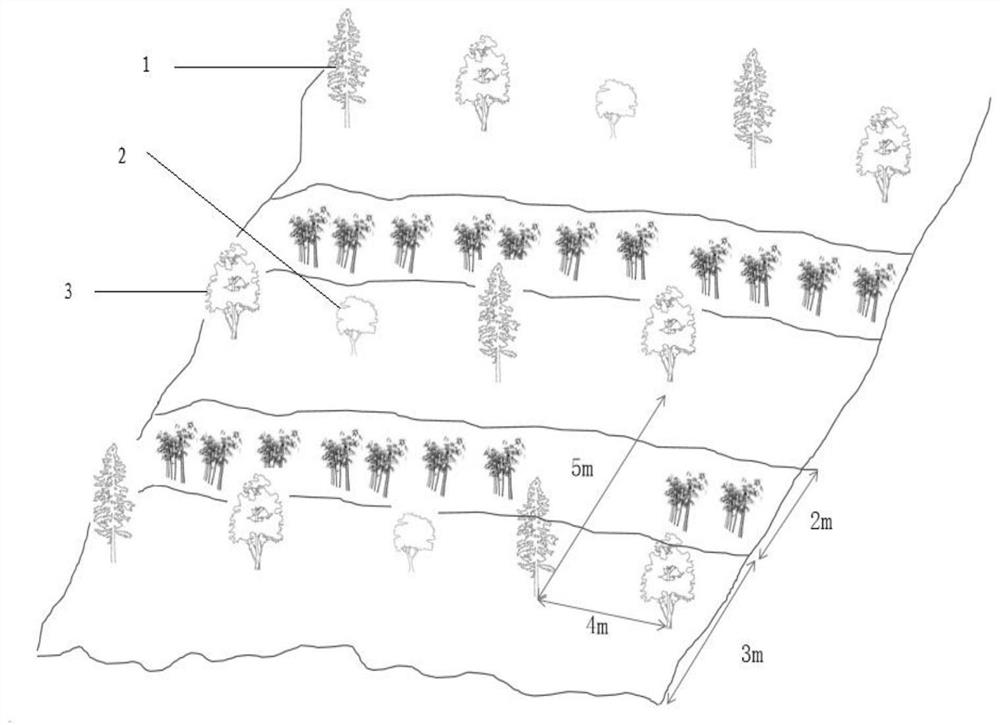Method for recovering suitable habitat of pandas in sub-alpine secondary bamboo shrub forest land
A restoration method, giant panda technology, applied in horticultural methods, botanical equipment and methods, horticulture, etc., can solve problems such as impossibility, unsatisfactory restoration effect, and long-term period, so as to promote structural restoration, inhibit growth, and achieve quality effect
- Summary
- Abstract
- Description
- Claims
- Application Information
AI Technical Summary
Problems solved by technology
Method used
Image
Examples
Embodiment 1
[0047] Implementation location: in the subalpine secondary bamboo-shrub jungle at Niba Mountain, Daxiangling Provincial Nature Reserve, at an altitude of 2100m. The dwarf bamboo under the forest is March bamboo.
[0048] 1. Forest land clearing: land preparation will be carried out after the snowfall decreases in March. The sub-alpine secondary March bamboo-shrub forest was selected as the restoration site. The canopy canopy density of the restoration site is 8%, and the bamboo density in March is 28 plants / m 2 (conform to the standard of more than 1.5 times of the original forest), and the bamboo cover is 90%.
[0049] The forest belts will be cleared in the form of horizontal mountain bands and along the contour lines. The specific operation method is: along the contour line, follow the method of "cut 3m and leave 2m" for directional thinning, the directional thinning bandwidth is 3m, and the reserved bandwidth is 2m. When preparing the site, clear the Sanyue bamboo in th...
PUM
 Login to View More
Login to View More Abstract
Description
Claims
Application Information
 Login to View More
Login to View More - R&D
- Intellectual Property
- Life Sciences
- Materials
- Tech Scout
- Unparalleled Data Quality
- Higher Quality Content
- 60% Fewer Hallucinations
Browse by: Latest US Patents, China's latest patents, Technical Efficacy Thesaurus, Application Domain, Technology Topic, Popular Technical Reports.
© 2025 PatSnap. All rights reserved.Legal|Privacy policy|Modern Slavery Act Transparency Statement|Sitemap|About US| Contact US: help@patsnap.com

